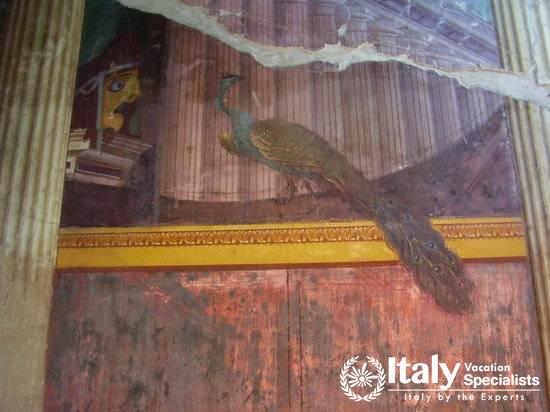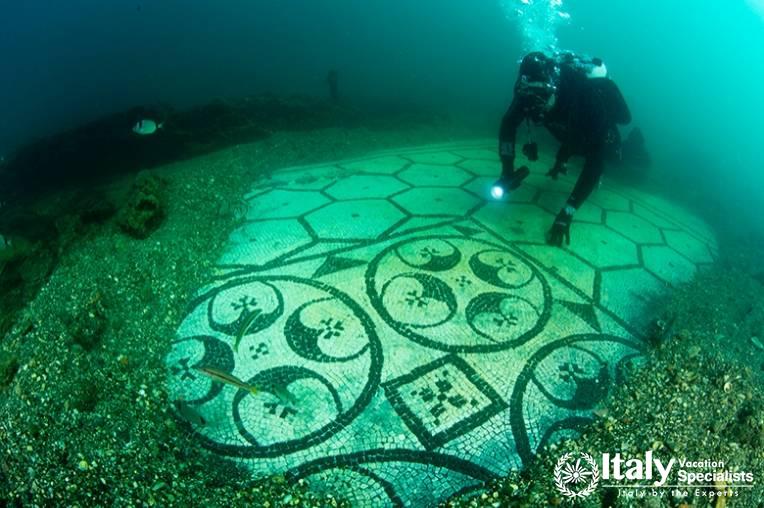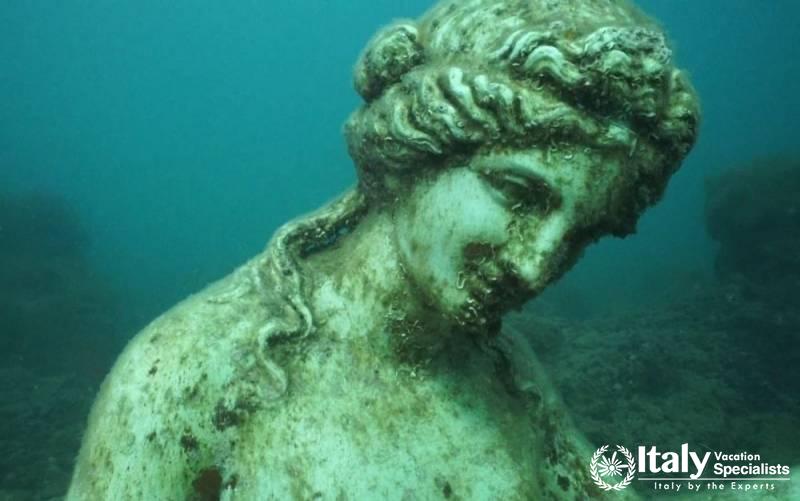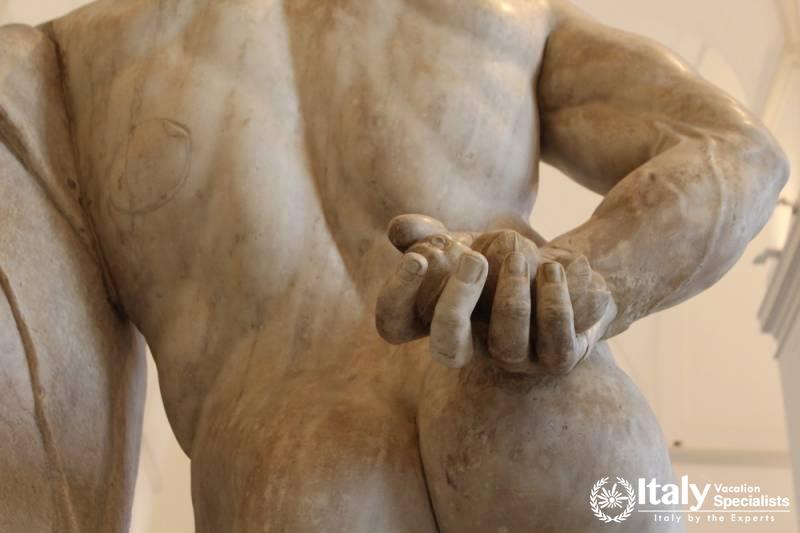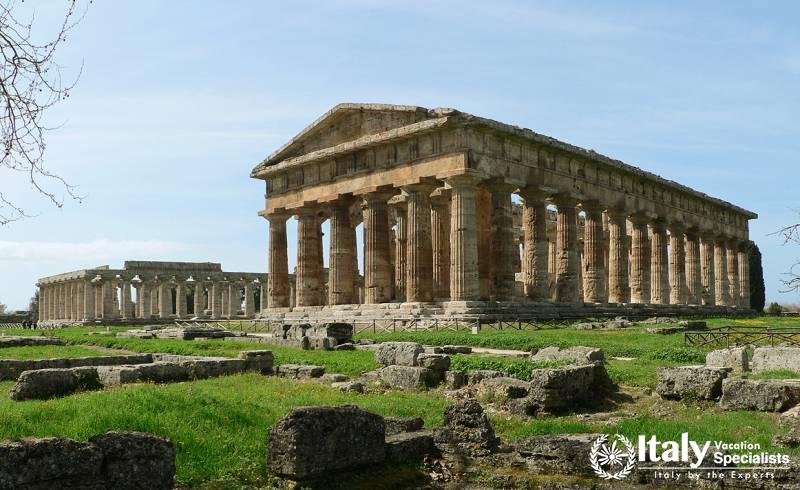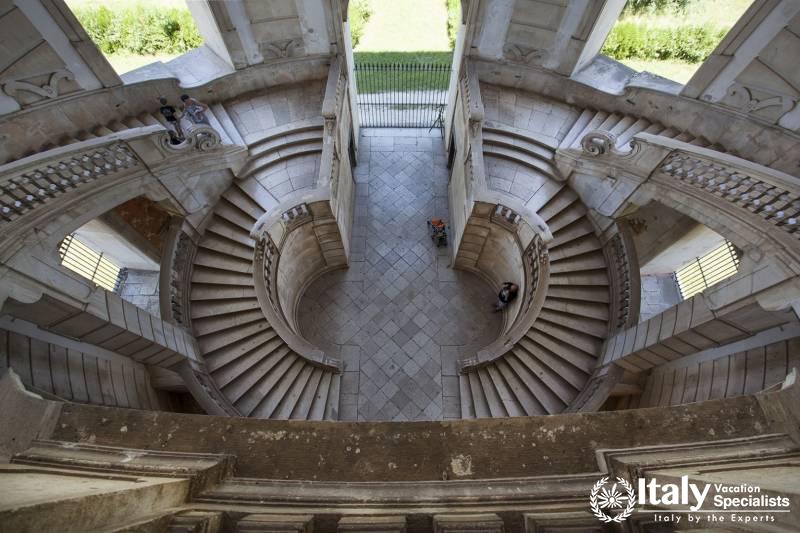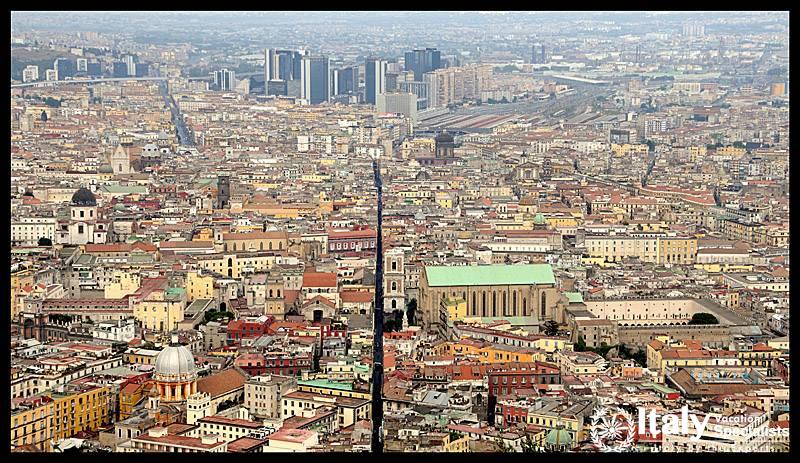In the Shadow of Vesuvius: the UNESCO World Heritage sites of Campania
-
 Tour Code:
TUR-01421
Tour Code:
TUR-01421
-
 Type:
Small Group
Type:
Small Group
-
 Duration: 9 days
Duration: 9 days -
 Departs from:
Naples
Departs from:
Naples
-
 Meeting Place:
Naples airport
Meeting Place:
Naples airport
Overview
Over 9 days we will visit 7 of these incredible sites and learn about the history of Campania from the arrival of the Greek settlers in the 8th century BC in Paestum and Naples, the Roman Empire that governed every day life in Pompeii and Herculaneum and the royal palaces and monumental churches built by the Kings of Naples, to the natural beauty of the Amalfi Coast.
These sites, and more, will be explored with local guides, bringing to life the peoples who have inhabited the area over the last 3 millennia, as well as introducing you to the food, wine and culture of Campania today.
Itinerary

Where we Visit : Naples, | Meeting Location : Naples airport
Overnight in Naples.

Where we Visit : Naples,
After some free time for lunch, you will meet your guide at the archeological museum. Here you will discover some of the wonderful decorative remains of the seaside towns that were destroyed in the AD79 eruption of Mount Vesuvius and the so-called Farnese Collection of Roman statues, many of which once stood in the Baths of Caracalla in Rome.
The rest of the day will be yours to visit the city and enjoy dinner at your leisure.
Overnight in Naples.

Where we Visit : Paestum,
The drive today will take you south to the beautiful Cilento National Park and the ancient Greek settlement of Poseidonia, modern-day Paestum, to visit the oldest Greek temples on mainland Italy. These 3 imposing Doric temples, dating from 600-450 BC are a lasting testament to the Greek colonies of Magna Grecia.
Our visit will include the temple complex and museum which includes artifacts and wall paintings from a number of tombs found in the area.
The second part of the day will take you further inland, to the Certosa di Padula, with a stop for lunch on the way. At 51,500m2, this massive Baroque charterhouse is the second largest in the world, though it does boast the largest cloister. The space is divided, according to Carthusian rules, into separate areas for contemplation and work, the latter including the kitchen where legend says an omlette of 1000 eggs was once cooked for Charles V.
In the evening, dinner on your own in Sorrento.

Where we Visit : Pompeii,
Life in this coastal trading town came to an abrupt end on August 24, AD79 with the eruption of Vesuvius that still dominates the skyline, leaving the people of Pompeii and the surrounding areas forever frozen in time.
For centuries Pompeii, one of the world’s most famous archeological sites, lay under 6m of the volcanic ash and pumice stone that covered it that night until excavations began in the…century. Today you will experience a snapshot of a single moment in time, unlike any other archeological site on earth. Your guide will take you through the streets of shops and houses, to the bath houses and theaters, explaining what historians have learnt about what daily life here was like.
Following the tour you will be free to explore the site by yourselves and enjoy a picnic lunch.
In the afternoon, visit the wonderful, but frequently over-looked, Villa Pompea. Lying between Pompeii and Herculaneum, this grandiose villa once belonged to members of the imperial family and gives us a unique opportunity to study the Pompeian painting styles in-situ. The brightly-colored frescoes include examples of the I, II, III and IV styles of painting and despite the damage they have suffered, they remain extraordinary examples of Roman painting.
Dinner this evening will be a selection of local produce and wine tasting on a vineyard at the foot of Mount Vesuvius.

Where we Visit : Heraculaneum,
On that August night, two millennia ago, Pompeii was hit by volcanic rock, destroying much of the upper levels of the buildings while Herculaneum on the other side of Vesuvius, was covered by volcanic mud which didn’t cause the same damage. Although the site is smaller (much of it remains buried far below the modern town) and the town did not have the same prominence as Pompeii, it is an interesting opportunity to see two-storey houses, carbonised-wooden beams, columns painted in the famous Pompeian red, as well as the emotional sight of skeletons huddled together down at the port, where citizens fled in the hope of escaping.
In the afternoon, venture up the volcano that even today dominates the landscape and life around the Bay of Naples. Our driver will take us almost to the top, with just a 25 minute walk at the end to reach the crater. Here you can stop and enjoy the view or take the optional tour into the crater with a specially-trained guide.
In the evening....

Where we Visit : Amalfi Coast,
In the afternoon, you will have some free time in Positano to hike the Trail of the Gods, get some great pictures or just relax with a glass of wine and enjoy the view.
Dinner at the Education Center.

Where we Visit : Naples,
Our journey will take us to a number of residences used by successive royals, from the fortified castles of Sant'Elmo and Castel Nuovo to the palaces of Capodimonte and Palazzo Reale, in the monumental Piazza dei Plebiscito. We will visit the Theater of San Carlo, the city's opera house which is connected to the Royal Palace. Opened in 1737, it is the oldest opera houses in the world and a model for those built later in cities around Europe.
Through the ages, royal patronage built many of the city's churches. Mary of Hungary, wife of Charles II of Anjou, began a tradition of royal female patronage in the city when she sponsored the construction of Santa Maria Donna Regina Vecchia for the nuns of the Poor Clares. Robert of Anjou and his wife Sancha of Majorca, built the monumental Santa Chiara with a double cloister to house both the Poor Clares and the Franciscan friaras. The church was to be the largest in the kingdom and a symbol of royal power. Today, despite having been heavily damaged by Allied bombs during WWII, the complex is a favour with visitors to the city for its unique cloister which is decorated with brightly-painted tiles in the Rococò style.

Where we Visit : Caserta,
Charles VII was said to be an enlightened leader, concerned with the needs of the people and the most popular of Naples' rulers. In the grounds of the palace is the San Leucio complex, silk works employing the most advanced technology in Europe at the time, disguised as a pavilion. A village was built for the workers who enjoyed privileged status and a social security system unheard of elsewhere at the time.
After touring the palace, you can decide whether to walk through the gardens to visit the so-called ‘English Garden’ and waterfall, or lie back and relax in the shade of a tree.

Where we Visit : Naples,
We hope you have had an amazing, informative journey and we look forward to welcoming you to Italy once again in the near future.
Inclusions/Exclusions
Tour Highlights and What's Included
What's Included
 All entrance fees to sites and museums
All entrance fees to sites and museums All hotel taxes and service charges
All hotel taxes and service charges All transfers
All transfers Daily Buffet Breakfast
Daily Buffet Breakfast Detailed explanation of sites
Detailed explanation of sites English speaking professional tour guide
English speaking professional tour guide Excellent Photo Opportunities
Excellent Photo Opportunities Free Time For Lunch
Free Time For Lunch Friendly and Professional Service
Friendly and Professional Service Fuel
Fuel Full day excursion to Pompeii
Full day excursion to Pompeii Lunch at famous Pizzeria in Naples
Lunch at famous Pizzeria in Naples Meals as indicated in the itinerary
Meals as indicated in the itinerary Private tour of the Amalfi Coast
Private tour of the Amalfi Coast Road Tolls
Road Tolls Service charges and taxes included
Service charges and taxes included VIP tickets to Pompeii
VIP tickets to Pompeii Wine Estate Visit
Wine Estate Visit Wine Tastings
Wine Tastings
What's Not Included
What's Not Included
Pricing & Availability
Please contact us today by either phone or email for assistance with this
booking.
Email : team@italyvacationspecialists.com
Toll Free : 1-866-779-2565
Map
Starting From : EUR 3260
(Pricing is per person based on 2 pax traveling)
Note : Price also Depends on Point of Departure & Number of Participants. Get in touch with us today to get an accurate quote!
Quick Enquiry Form
Search Your Tour
PRIVATE TOURS
Buy 2 And Get 50% Off Your 3rd Tour
Client Testimonials
-
Dear Guiseppe and Jesse, We just returned from our most wonderful vacation to Italy and wanted to first thank you for putting together such a wonderful trip, and second to provide some feedback for the future. Hotels 1. Hotel Sovestro in San Gimignano was wonderful. The staff were very friendly and helpful and made the first portion of our journey very stress free. They made us feel like we wer ... [Read More]
- Ron and Deb Crosby -
I am a travel agent with All About Honeymoons and I would highly recommend Italy Vacation Specialists. Jessica was wonderful in helping us plan in a last minute anniversary vacation during high season without any issues. She even checked on our clients while on vacation to make sure things were going well. I plan on using them again soon for all my future bookings! ... [Read More]
- Tammy Joyce, All About Honeymoons -
In August 2018, my family of four and myself travelled from Vancouver, BC to Rome Italy and spent 3 weeks touring Italy with IVS. This company had come highly recommended by many friends and associates of ours who had used them before and indeed to say they do an outstanding job is an understatement. You can tell while being in Italy that it is one complicated place to run tours in, just by the ... [Read More]
- Vijaya Sunil CPA, CGA -
As a travel agent, but also a traveler to Italy, thee is no other company I would recommend than the Italy Vacation Specialists. Not only do they really care about what they are doing, they also really know Italy and try to educate many people about ways they can best see the country and not fall into tourist traps. I have been on 4 trips with the IVS team, firstly when they did my first 2 tri ... [Read More]
- Laura Chomiak, Travel Agent -
I have traveled to Italy 2x with the IVS for my own pleasure trips and 2x for business with IVS. These guys really pay attention and make your trip go like clockwork. Italy is nuts, just saying! There are so many rules and restrictions now, so we did not want to drive ourselves. Having traveled with them many times and done business on several occasions, most definitely USE this company. They k ... [Read More]
- JoAnne Beaudoin, Retired Nurse -
Jesse, There are no words to describe the fabulous time we had in Italy. Everything went as you promised. Absolutely no problems! The venues were fabulous. The guides were punctual and helpful. It couldn't have worked out better. You and your staff deserve high praise for the quality and efficiency of your work. BTW, Guiseppe was an absolute delight. We enjoyed his informative and effervescent per ... [Read More]
- Jo Ann West -
I traveled with JoAnn West through your services, guided by Giuseppe, in July of this year. What a wonderful experience; your service is really top notch! If I return to Italy for a tour, I will absolutely use your services again and recommend you to my friends! ... [Read More]
- Lucretia Brower -
I went to high school with the owner of the company who organized my honeymoon for myself and my now wife from Tokyo. We spent three short weeks seeing Piedmont and experiencing wine paradise there, then heading to Nice in France with our private driver and flying to Rome where honestly 4 days is NOT enough. They keep saying to spend more time and we could not agree more! You need to spend more ti ... [Read More]
- Robin and Kumi Bruun, Tokyo Japan -
Jesse & Giuseppe,Sandy and I have been looking through my slides of our trip to Southern Italy. We had such a good time with you and Giuseppe that we wanted to let you know again. You were the best guides ever. ... [Read More]
- Bob & Sandy -
We're home now from the most amazing trip to Italy! I can't thank you enough for your efforts and coordination of what was without question the finest vacations I've been on to date. ... [Read More]
- Carol Carson
Incredible Experiences in Italy for Exceptional Prices
Private Tour of Volterra and Her Incredible
Our Featured Properties
Our Recent Blog

Our Top Picks for Family Vacations to Italy
Discover Italy's best family-friendly destinations, from Sorrento's charming playgrounds to Minori's scenic Lemon Trails. With breathtaking beaches, rich history, and welcoming towns, every stop promises unforgettable moments. Pack your bags and create lasting memories in Italy's most enchanting locales ...
View Post
Italy: The Ultimate Destination for a Magical Christmas Celebration
If you're looking for a Christmas experience that combines history, culture, delicious food, and a whole lot of holiday cheer, Italy is the place to be! Italy has a knack for making everything feel a little more magical during the holiday season. Picture yourself wandering through charming markets, sipping hot cocoa, and nibbling on festive treats ...
View Post
Top 10 reasons why Italy is a top Winter & Ski Destination
The crisp winter air fills your lungs as you glide down the pristine slopes of the Italian Alps, surrounded by breathtaking mountain vistas that seem to stretch into eternity. Each turn on the snow-laden trails reveals a new perspective of Italy's enchanting winter landscape, where the charm of cozy mountain villages meets ...
View PostFor Customized Holidays or Expert Advice for travel in Italy or the Mediterranean, Please get in touc with your travel agent or have them
-
Direct In Italy: +39 375 823 5314
-
Toll Free: 1-866-779-2565




